Micropalaeontology
Type of resources
Topics
Keywords
Contact for the resource
Provided by
Years
Formats
Representation types
Update frequencies
Scale
-

Age model tie points and micropalaeontological data for International Ocean Discovery Program Hole U1488A. Relative abundances of Neogloboquadrina acostaensis and six morphospecies of Pulleniatina (planktonic foraminifera) from the hole. Coiling ratios (% dextral) specimens for lineages of Pulleniatina with 95% confidence intervals. Supplementary data table to Pearson, Young, King and Wade (submitted), Biochronology and evolution of Pulleniatina. Table includes data relating to the Pulleniatina lineage from International Ocean Discovery Program Hole U1488A.
-
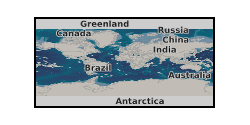
Microfossil samples submitted to the BGS biostratigraphy laboratory are currently registered using the prefix 'MPA'. Samples include rock, residues from sample preparations, and slides of mounted specimens. Rock, residues and slides from the same sample all bear the same unique identifying sample number. The numbers MPA 1 to 54400 have been used, but this grows steadily. There are currently 21 volumes of registered samples. The value added dataset comprises data for each sample held in the sample register, including collectors' symbols and numbers, 1:10k (or 6") OS quarter sheet, NGR, 1:50k (or 1") geological sheet, borehole name and depth (if relevant), locality, geological formation and report numbers. The value added dataset also includes identifications of specimens on each slide, which are listed on logging sheets and are held separately.
-
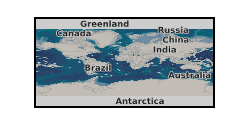
Data include geological logs and charts; letters, minutes & memos; notes; externally written reports; Internal reports; Research Reports; annotated publications, records and reports; and other miscellaneous documentation. Although some of the data go back to the first half of the 20th century (and rarely earlier), the bulk of the data refer to work carried out since about 1960. The data are filed under four subheadings: i. 1:50K sheet files (data relating to BGS mapping projects) for England & Wales, Scotland and Northern Ireland. ii. Offshore sheet files (data relating to BGS mapping projects) for the UK continental shelf and North Atlantic. iii. Offshore Quadrants (data relating to the hydrocarbons industry) (confidential). iv. Foreign biostratigraphy (in part confidential). v. General Palaeontology, Biostratigraphy & Taxonomy.
-
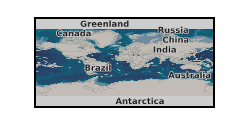
Microfossil samples submitted to the BGS are currently registered using the prefix 'MPA'. Samples include rock, residues from sample preparations, and slides of mounted specimens. Rock, residues and slides from the same sample all bear the same unique identifying sample number. The numbers MPA 1 to 51000 have been used, but this grows steadily. There are currently 21 volumes of registered samples.
-
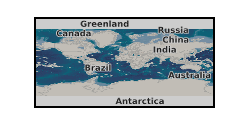
All type and figured calcareous microfossils and palynmorphs held in the BGS collections are registered using the prefix 'MPK'. To date MPK1 to 13400 have been used. Information includes name, locality, geological details and journal details.
-
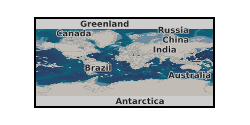
This dataset contains the low-resolution isotopic data (O & C) covering the last 1Ma, which is used to establish a more precise glacial-interglacial stratigraphy than the shipboard bio/paleomagneto stratigraphy for 2 NW Pacific Sites (IODP EXP350 1436C and 1437B) both were recovered at intermediate depths. The planktonic foraminifera census counts are used to assess the changes in surface water in the area affected by the Kuroshio Current. They are also used in concert with other sedimentological, micropaleontological or taphonomical evidences to estimate the changes in carbonate preservation at intermediate water depth in relation to changes in global ocean circulation during glacial interglacial cycles. Data report: Pleistocene planktonic foraminiferal oxygen and carbon stable isotope records and their use to improve the age model of Hole U1436C ores recovered east of the Aogashima Volcano, Maryline J. Vautravers
-
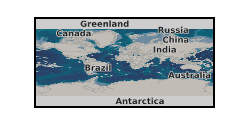
The BGS Stratigraphical Masterpack Series aims to provide high quality biostratigraphical information modules for industry. It is envisaged that the majority of clients will be among the exploration, extraction, construction and consultancy sectors. The topics of these packages are designed, as far as possible,to be relevant to industrial needs by, for example, focusing on a particular frontier exploration area or documenting a fossil group of major interest. They act as practical desk-top guides for routine reference work and are also the basis for in-house staff training. The latest Masterpacks are PC based. There are four titles currently available for purchase from BGS: 1.Reference Collection of British Jurassic Dinoflagellates 2.Jurassic Dinoflagellate Cysts from Skye, NW Scotland 3.Stratigraphic Masterpack on Carboniferous Palynostratigraphy - The Arctic to North Africa 4.Palaeozoic Palynostratigraphy of North Africa, The Middle East & Gulf Region: An Integrated Database
-
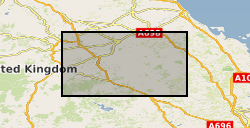
The data set consists of rock samples collected from Coquetdale, Coldstream and Whitrope Burn from 2013-2014; milled material is included. There is an Excel spreadsheet of sample numbers with location, sample height on log, d13C data and %C. There are scans of field logs from Coquetdale, Coldstream and Whitrope Burn, and Illustrator drawn logs from Coldstream which include samples collected at a later date. Scans of thin sections are also included. (thin sections to be kept at Leicester for the time being – still being worked on for papers.) Each locality folder has an Excel spreadsheet detailing samples, sample height, %C and bulk and specific d13C values. These data were used to interpret the environment in which early tetrapods have been found in the early Carboniferous. These data supported the MPhil thesis 'In an alternating marine and non-marine depositional setting, where and how are early Carboniferous tetrapods preserved?' by Sherwin, 2018, and one publication including data from Whitrope Burn - Richards et al., 2018, (https://doi.org/10.1017/S1755691018000166).
-
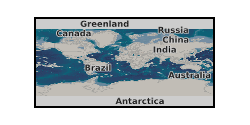
The data set consists of rock samples collected from Burnmouth, a core drilled at Norham, from Crumble Edge, Willie's Hole and Nova Scotia from 2012-2016; milled material is included. There is an Excel spreadsheet of sample numbers with location, sample height on log, lithology and fossil content. Scans of field logs from Burnmouth, Crumble Edge, Edington Mill, Pease Bay (UK) and locations in Nova Scotia, and overview drawn-up logs from Burnmouth, Norham, Crumble Edge and Willie's Hole are included. Scans of thin section scans are also included. There is a spreadsheet containing geochemistry data - sample numbers with lithology and %C, %S, d13C. These data were used to interpret the environment in which early tetrapods have been found in the early Carboniferous. Publications include: Bennett et al., 2016 (doi: 10.1111/sed.12280); Bennett et al., 2017 (http://dx.doi.org/10.1016/j.palaeo.2016.12.018 0031-0182); Clack et al., 2016, (DOI: 10.1038/s41559-016-0002); Kearsey et al., 2016 (http://dx.doi.org/10.1016/j.palaeo.2016.05.033) ; Clack et al., 2018, (doi:10.1017/S1755691018000087); Millward et al., 2018 (doi: 10.1111/sed.12465); Ross et al., 2018 (https://doi.org/10.1017/S1755691018000142)
-
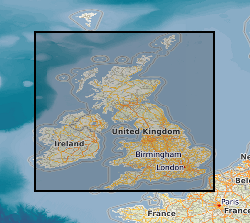
PALSLIDES_ED is the BGS Edinburgh Palaeontological Slides Collection. It comprises two registration series. The MIC (microfossils) series, which is added to sporadically, includes c.950 individually registered slides (each with up to 100 cells) of microfossils (mainly foraminifera and ostracods). The PS (Palaeontological thin Sections) registration series, which has not been added to since 1987, comprises 4202 fossil thin sections and mounted slides, and includes various donated collections. Both the MIC register (10 volumes) and PS register (2 volumes) record the locality of each slide and any previous registration numbers. Stratigraphic information may also be given. Taxonomic information is not complete. There is, at present, no separate index (either analogue or digital) to the dataset, but it is included in FOSSLOC4. GSE_SPECIMENS and SMITH_GSE include those slides and thin sections transferred to the Type and Stratigraphical Collection from the Survey and John Smith collections.
 BGS Data Catalogue
BGS Data Catalogue